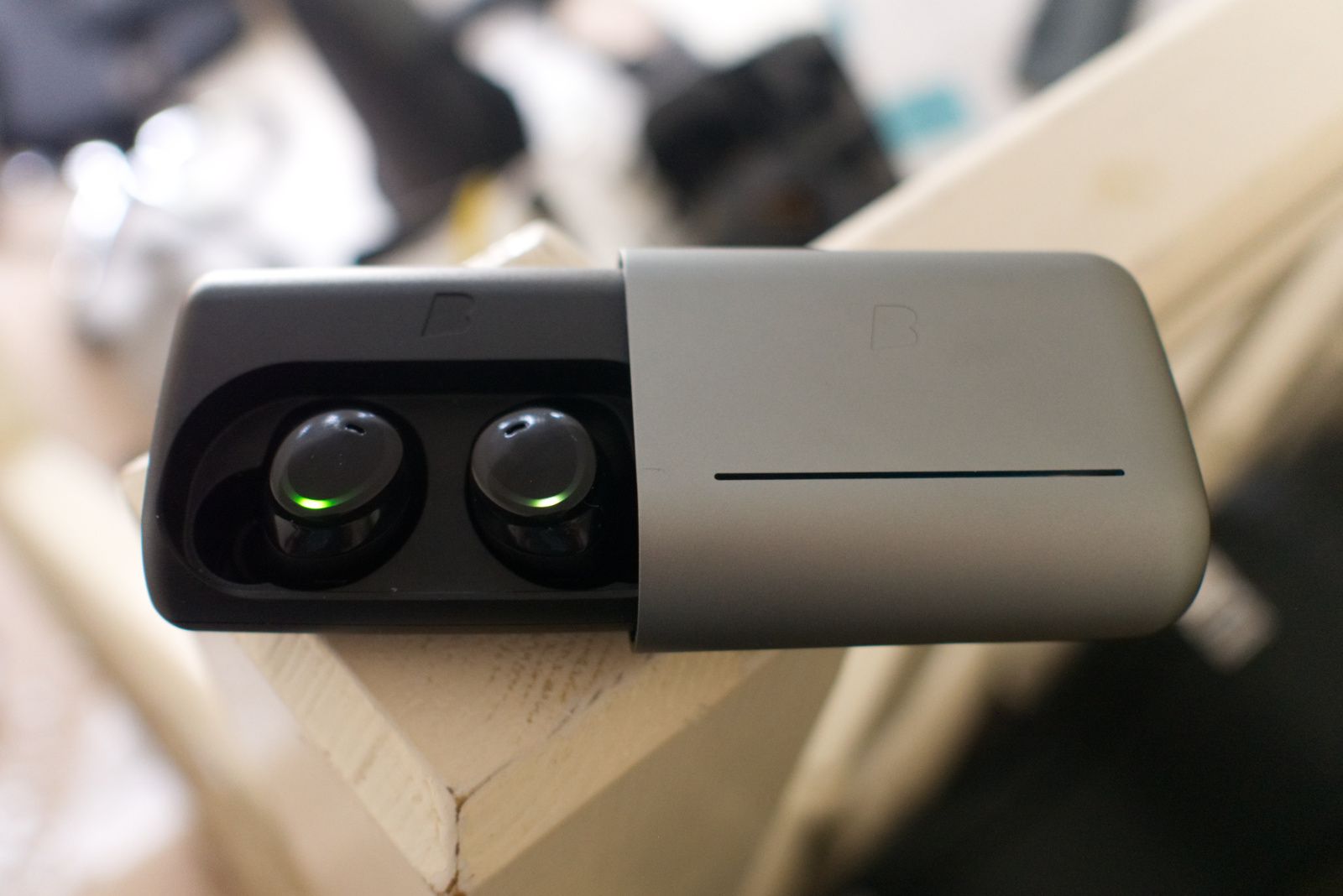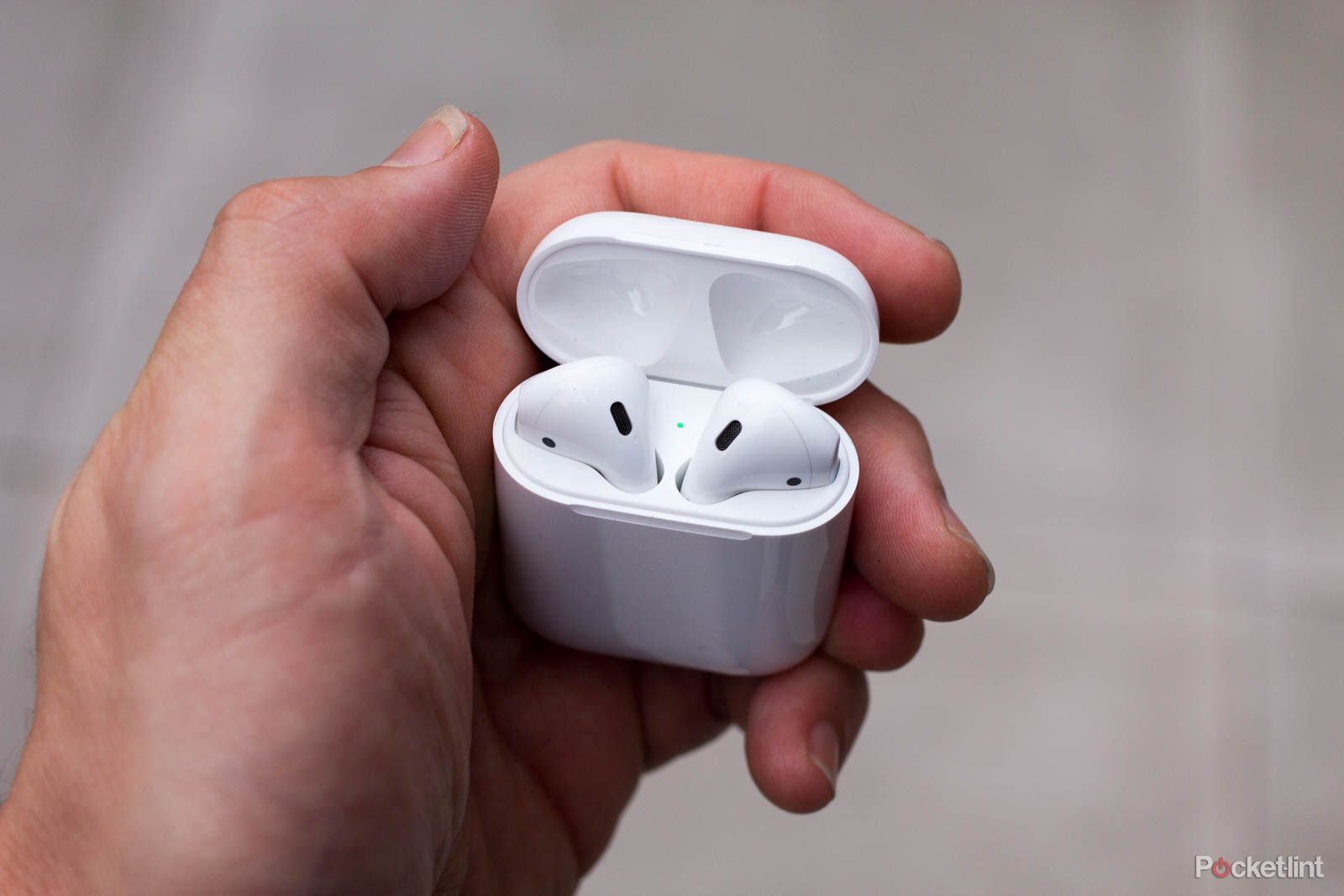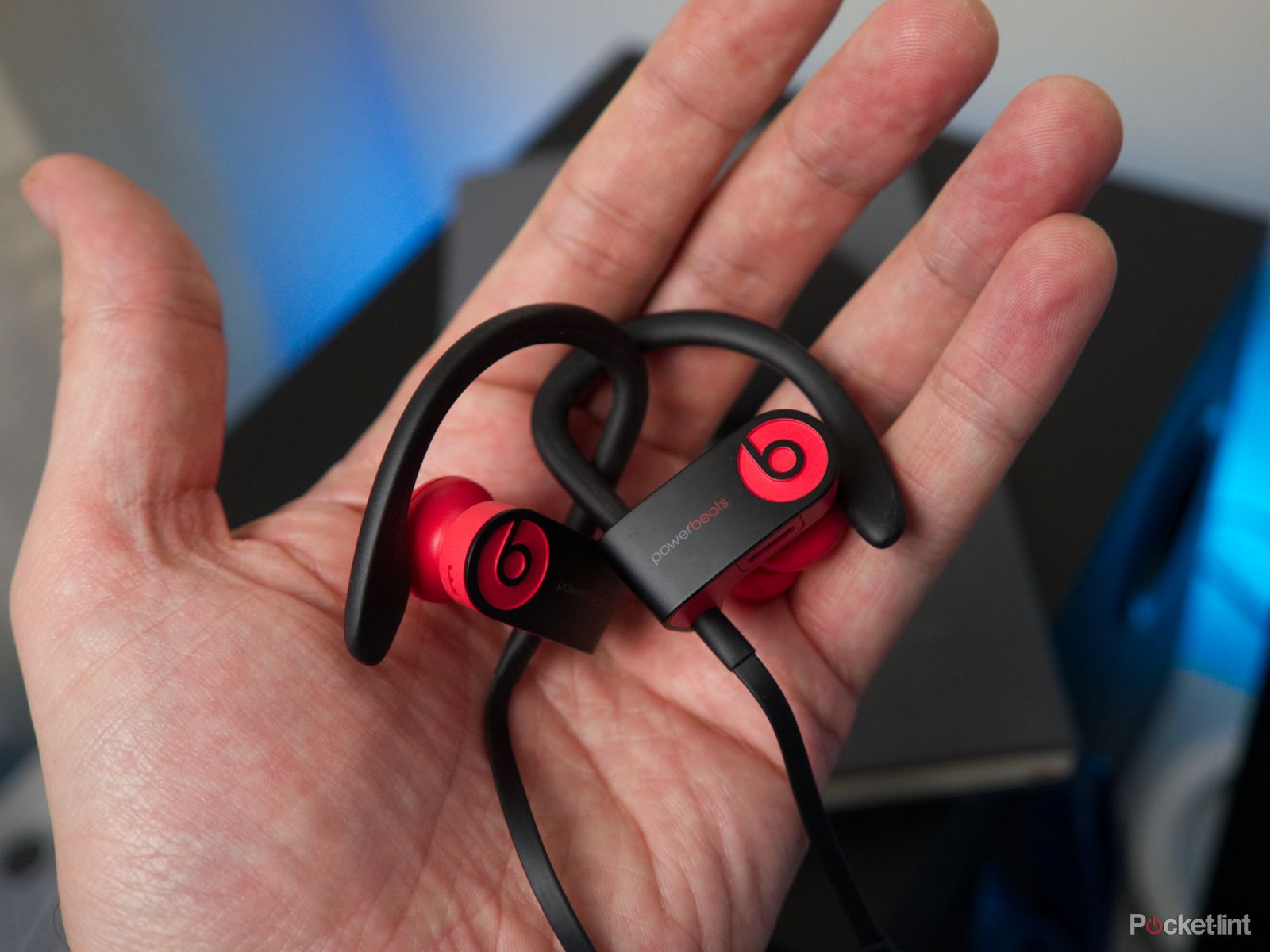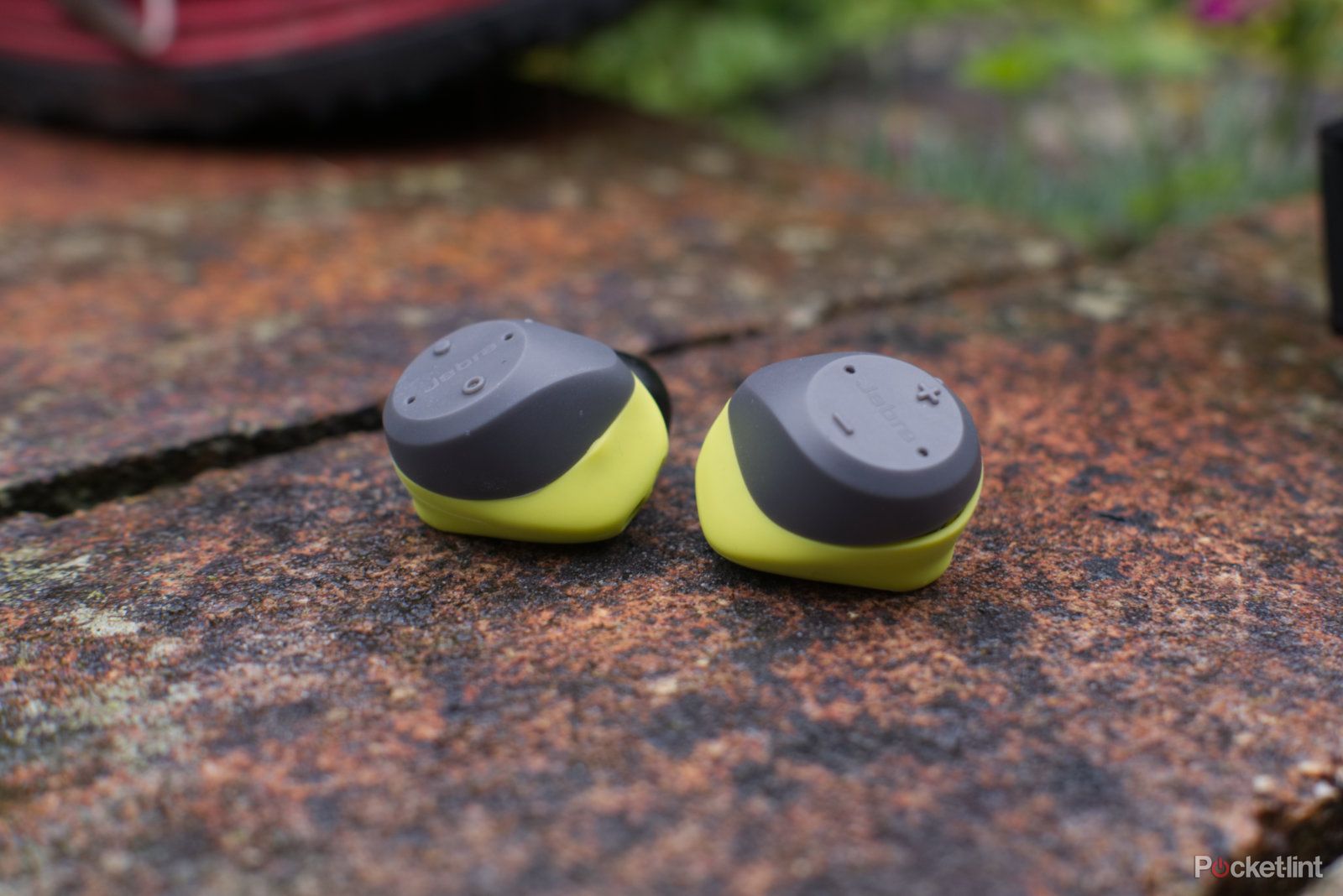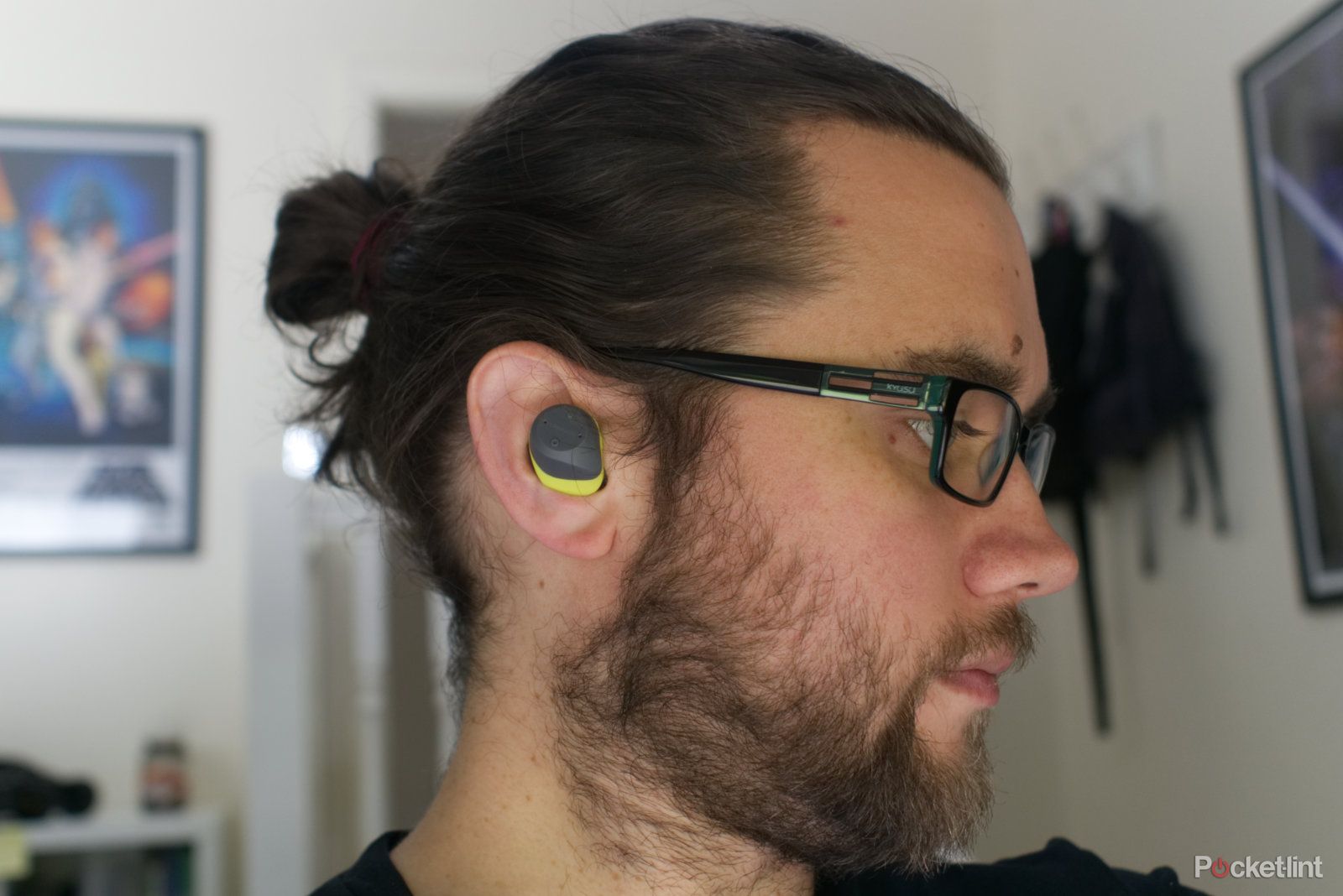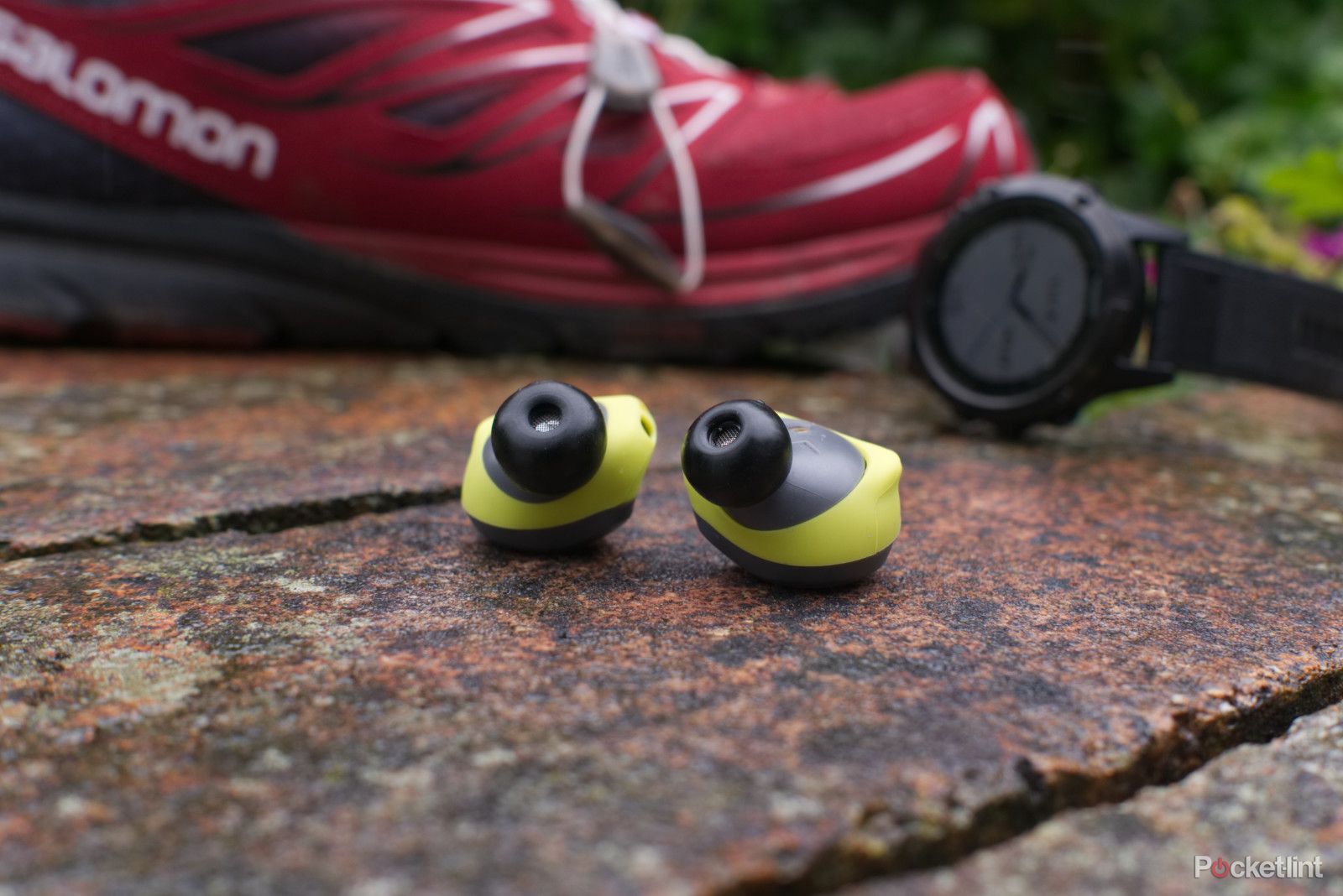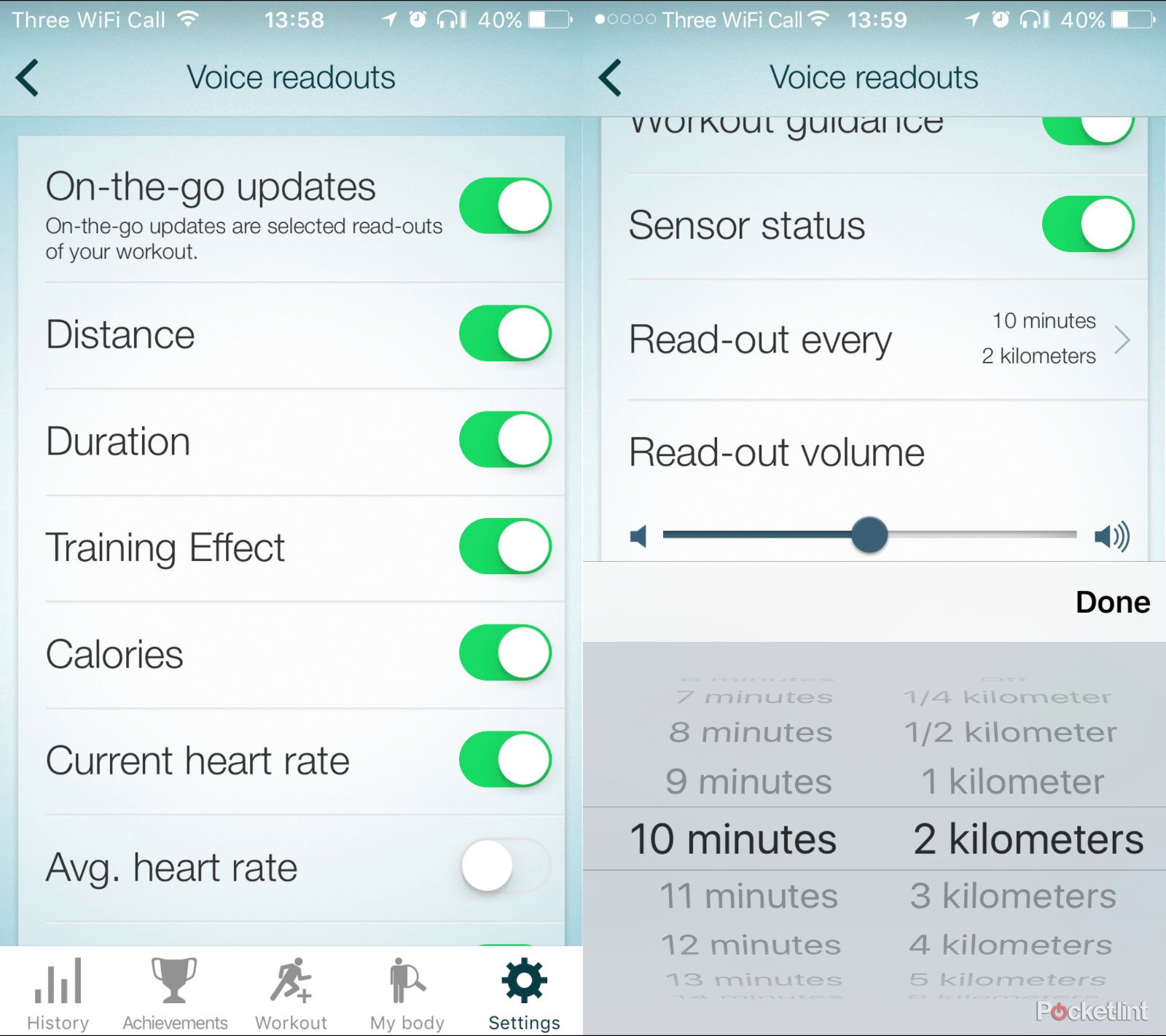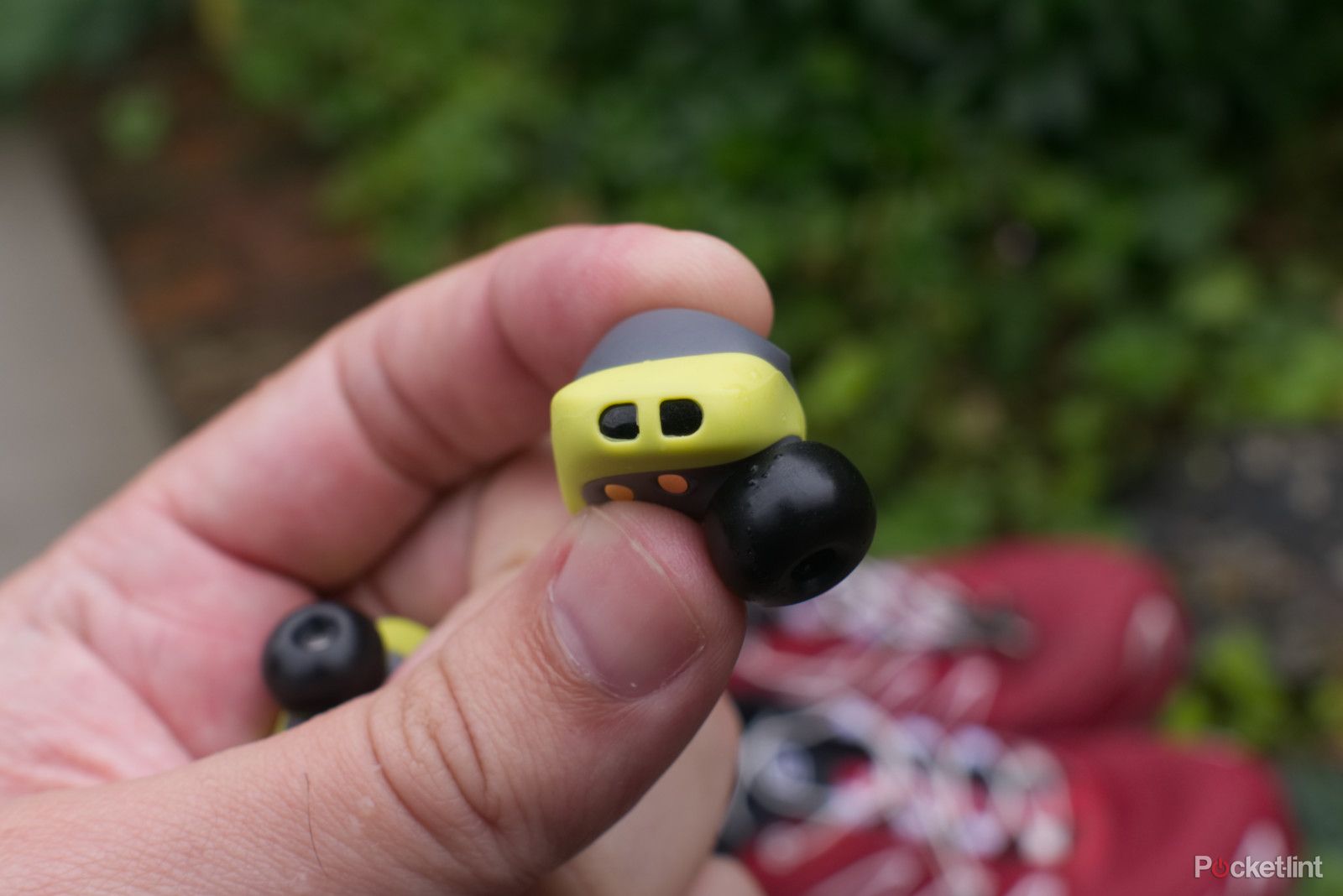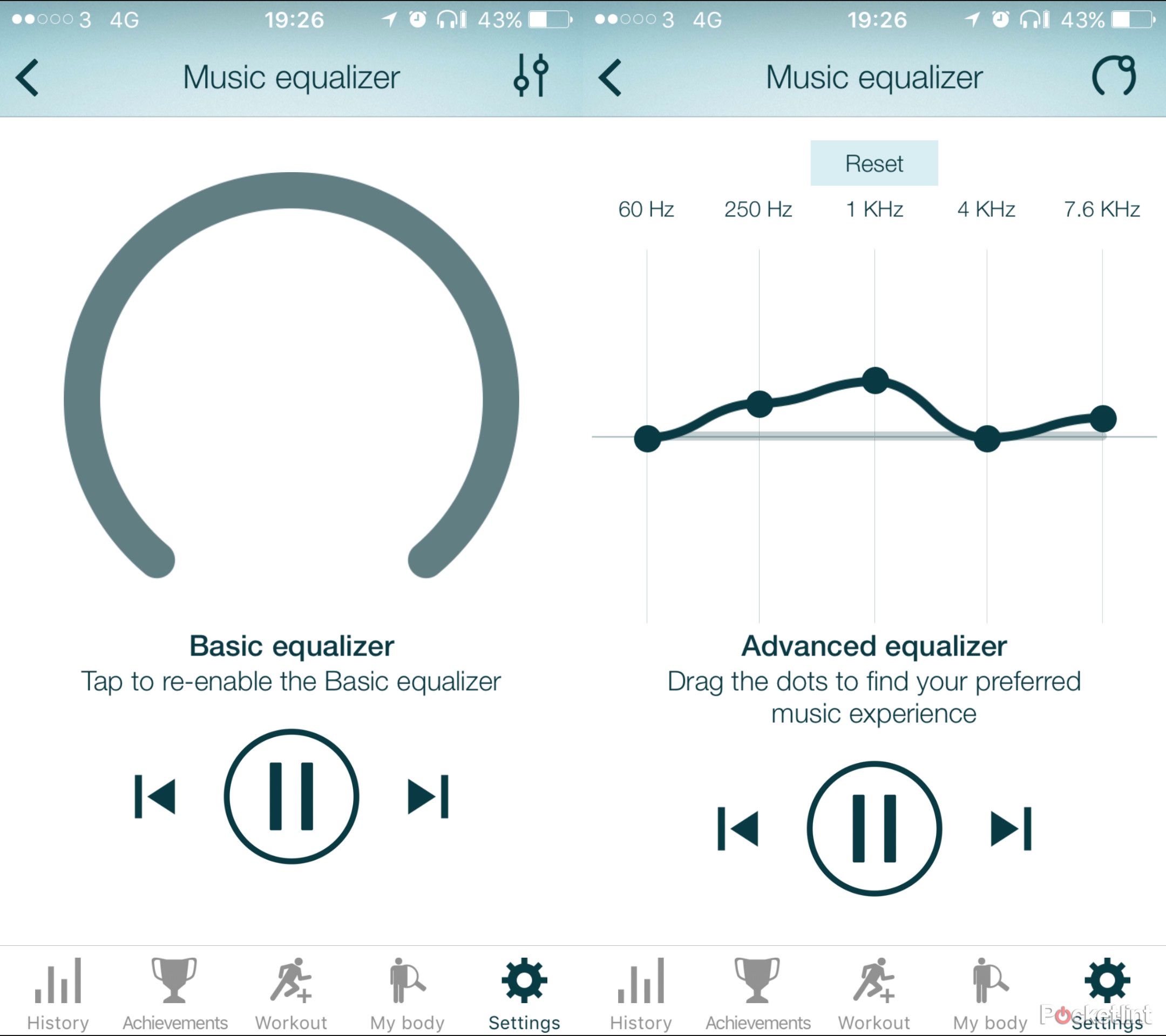There's no denying it, the age of the wire-free earphones is here, almost to the point of becoming an established norm. While we can thank Apple AirPods for stoking the fire and assisting with enabling this mass-market position, there are lots of other interesting competitors out there too.
Our quick take
If you're wanting a pair of earphones for tracking your exercise that won't drop out when on a run, won't have any connection issues, and will last a long time on a full charge, the Jabra Elite Sport is an excellent choice.
Our only real criticism is that the design makes them a little uncomfortable to wear over long periods. They're noticeably less slender and comfy than their biggest competition, the Bragi Dash Pro, but the Jabra perform better and you do get a more snug fit, which is a good thing for sound quality and for stay-in-ability during workouts.
Overall, the second-gen Jabra Elite Sport is perhaps the only choice in the wire-free market. Great sound, snug fit and accurate exercise data mean there's little compromise.
Alternatives to consider
Bragi Dash Pro
Bragi's latest creation is a big improvement over the first generation. In fact, we'd recommend these if you just want wire-free earphones that sound great. That statement is a little sad, however, given that they're packed with lots of modern, smart technology. It's just a shame that the fitness tracking doesn't work reliably.
Read the full article: Bragi Dash Pro review
Apple Airpods
They're not for fitness tracking, or wearing during sport of any kind, but the Airpods are undoubtedly the most convenient and user friendly wire-free earphones. At least, they are if you have an iPhone.
Read the full article: Apple AirPods review
Powerbeats 3 wireless
They may not be wire free and technologically advanced like the Jabra earphones, but the Powerbeats 3 Wireless are among the best sports headphones on the market. They're reliable, durable and sound good, with plenty of bass to keep you going on your endless, leg burning treadmill sessions.
Read the full article: Powerbeats 3 Wireless review
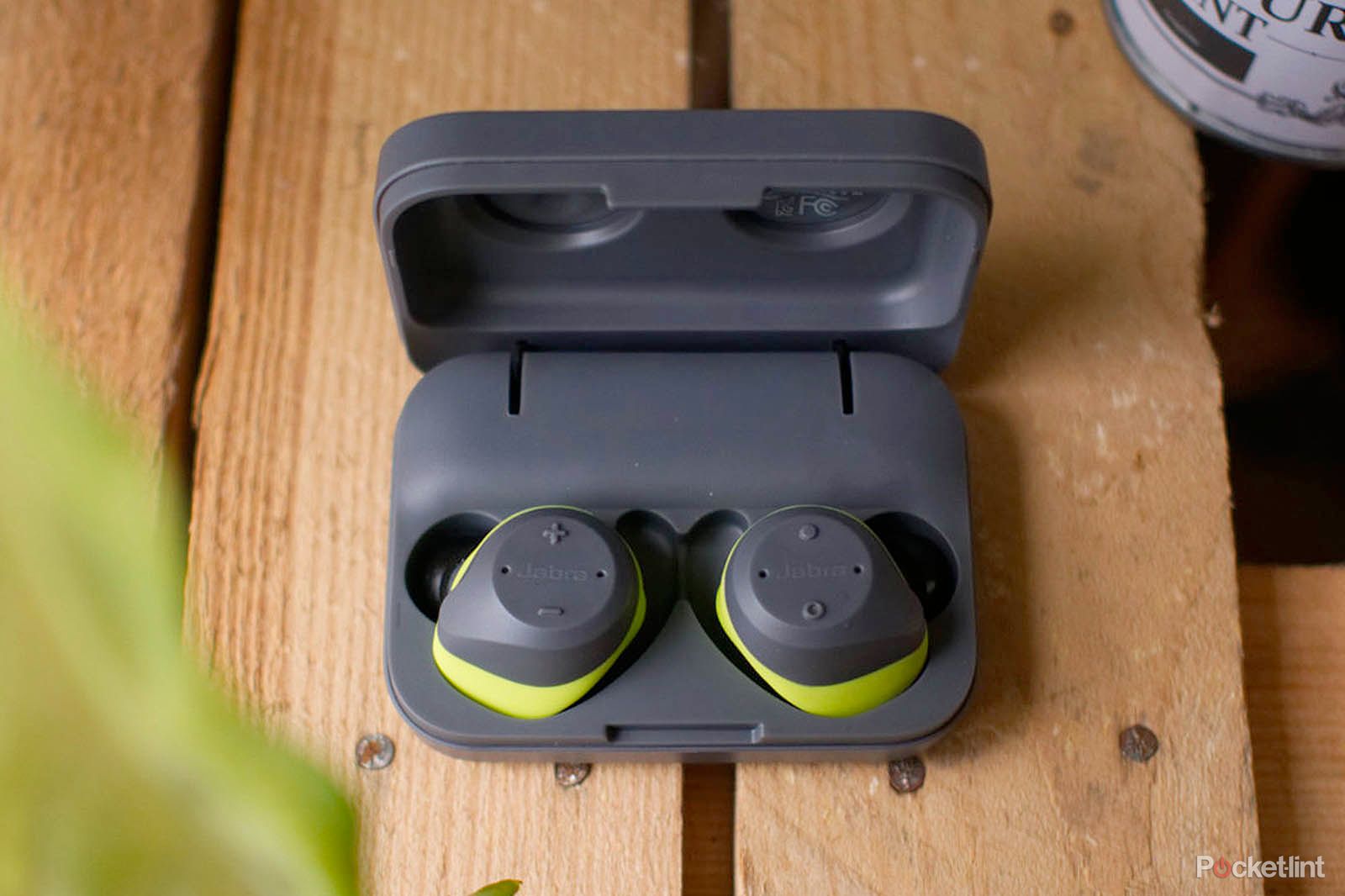
Jabra Elite Sport (2017) - 4.5 / 5
| FOR | AGAINST |
|---|---|
|
|
Jabra Elite Sport (2017)
One of 2016's best efforts was the Jabra Elite Sport - "the AirPods you really want", we said - and for 2017 it's time for round two, with a fresh colour scheme and even better performance.
The 2017 Elite Sport offer an improved battery life, but retain the durable design and portability of the original wireless in-ears. As the more-than-paraphrased age-old saying goes: "if it ain't broke, just make it last longer".
- 7 best workout headphones you can buy today
- The best Bluetooth headphones 2018: top on/over-ear wireless headphones
Jabra Elite Sport (2017) review: Design
- Wire-free earphones
- Foam or silicone tips in three sizes
- EarWings for keeping them in your ears
Taking a similar approach to Bragi with its Dash Pro, Jabra didn't change the design of its Elite Sport earphones at all. Or, to be more specific, the shape and size is exactly the same as before.
The one thing that has changed for the second-gen is the colour scheme. Unlike the previous model, which was only available in black, the new wireless earphones are available in a new hue. It's mostly grey with a splash of fluorescent yellow, to reinforce the fact that these are, indeed, sports headphones.
Each of the earbuds features external buttons. The left earbud has the volume up and down buttons which adjust the volume when pressed once, or skip tracks when held. On the right earbud, there's a play/pause button which also has an answer/end call function and can activate the so-called "HearThrough" ambient noise pass-through feature when double-pressed. There's also an activity button which launches the Jabra app when the phone is unlocked, and can be long-pressed to launch whichever tracking function is on screen at the time.
While these buttons are a little small and fiddly, they are still pretty easy to feel, and aren't easily confused with one another thanks to the distance between them.
There are two microphones on each earbud for use during calls, to operate noise-cancelling and HearThrough, the aforementioned external ambient noise feature.
As with the first-generation, the new Jabra in-ears ship with three different sized EarWings. These are the silicone "sleeves" that fit over the earphones and keep them securely in place during exercise. Despite not having small ears, we found the smallest size to be more than adequate, thanks to the Elite Sport's overall large size.
This size and snugness does mean that they are a little uncomfortable to wear for long periods; they definitely feel like they're stretching the ears a bit. Despite that, for an hour or so listening to an album while out running, it's totally fine.
Besides, for the purpose of sport, that snugness is important. In our testing, they didn't once feel like they would fall out, not even slightly, during any of our runs or workouts. Still, we'd like to see them lose a little of that bulk for the next generation.
The Elite Sport also ships with three different sizes of foam tips and three different silicone tip sizes. For better audio, foam is ideal, but for more sweat resistance, the silicone tips are better. They're easy to take off and swap out depending on what you feel like using.
What's more, they're IP67 water and dust resistant, ensuring that even if you go running in the rain, or produce an inordinate amount of sweat during your HIIT sessions, these Jabra wireless in-ears will keep going and are guaranteed against sweat damage for three years once registered.
One thing that could have done with a design change is the battery pack/case. Unlike a number of similar products, there are no magnets to keep the earphones securely locked in their individual cradles. That means once you lift the lid, the earbuds disconnect from their charging points, because it's the lid that presses them down to ensure they charge while stowed away.
The case does have one very convenient feature: once opened, the earphones activate and automatically connect to your phone, so there's no messing around pressing buttons or waiting for them to connect. It works every time and takes any hassle out of the connection experience.
Jabra Elite Sport (2017) review: Performance and fitness tracking
- Built-in heart-rate monitor
- Phone-based GPS
- Plan training, take fitness tests and more
The Bluetooth connectivity performance has been superb in all of our testing. It hasn't mattered if the earphones were tracking a run with an iPhone in a pouch around our waist, or if we were simply listening to music at our desk in the office, they've stayed consistently connected the entire time. While the Bragi Dash Pro was improved in this regard over its first generation attempt, the Jabra Elite Sport is still the more consistent product.
The same can be said of fitness tracking. Because the Jabra Elite Sport uses the phone's GPS signal - through the Jabra Sport app - to track runs, it's as reliable and consistent for tracking as a GPS-powered smartwatch. The same is true of the heart-rate sensor, cadence and pace calculations. When compared with the data gathered from our Garmin Fenix 5, the Elite Sport was virtually identical in its tracking.
Heart rate data was one to two beats per minute different, distance tracked was a few metres different, but that was because the activity started/stopped at slightly different times on each device. We started the activity on the Jabra first, and ended after, thanks to iPhone being in a tight, terrible pouch. Likewise, the cadence showed one to two steps per minute difference. Overall, the Jabra is pretty much as accurate as the best hardcore sports watch on the market, which is pretty decent going for a pair of earphones.
If you already use a different app - like Strava - for running, you can still use your phone to track your run and just use the earphones as the heart-rate monitor if you'd like. You don't have to use the Jabra Sport app, although it does include some really useful features.
Before beginning any activity tracking you can do one of four tests so that the app has a good benchmark on which to base its calculations. You can take a resting heart-rate test and personalise your heart-rate training zones. There's also the VO2max test to determine how fit you are by running at 70-100 per cent of your maximum heart rate for 15 minutes. There's also the Cooper test to see how far you can run in 12 minutes, and the Orthostatic Heart Rate test to see whether or not you're overtraining.
When it comes to training and activity tracking, the Jabra app has a selection of all the basics. You can track running, running on treadmill, cycling, walking, hiking, spinning, skating and walking on a treadmill, as well as a selection of circuit/weight-training programmes.
Once you've started an activity, you get audio-based updates in the earphones informing you of your progress. When running, by default, it does this every 10 minutes or every two kilometres, but you can change those settings. If you'd rather hear every kilometre or every five minutes, for instance, you can. You can select any time interval from one to 60 minutes, or distance interval between 1/4km to 15km, or switch either/both off. You can also tap the app button on the right earbud during a workout to hear an on-demand update, or disable updates by double tapping. If you want to change which voice readouts you hear, there is a settings option within the Jabra Sports app where you can select to switch them off, or just choose which metrics you want to hear.
Once you've finished your activity, the mobile app gives you a breakdown and then tells you how long you should rest, based on the intensity of the workout. Like the tracking itself, this resting suggestion matched exactly what the Garmin Fenix 5 watch told us after the same workout.
Jabra Elite Sport (2017) review: Battery life
- 4.5 hours continuous listening
- 13.5 hours with battery pack
Part of the reason Jabra launched an improved version of the Elite Sport was to give better battery life. The company claims the built-in batteries last 50 per cent longer than the previous model, which has proven accurate in our testing.
When taken out of their case fully charged, the earphones last for up to 4.5 hours of continuous play time before needing to be docked again. The case itself contains enough power to fully charge the earphones twice over, giving a total of 13.5 hours use before needing to be plugged into a power source using the Micro-USB cable.
The long and short of it is that the users should comfortably be able to make these last a full work-week's worth of commutes. In our testing we listened to an hour of music in one sitting, then placed them back in the case, and did this five times in addition to a 40 minute session while running and listening to music, and still the case was able top the earphones' battery back up to 100 per cent.
While the first-generation Elite Sport wasn't terrible in terms of longevity, the newer model is an improvement. Jabra also comfortably beats the Bragi Dash Pro in this department by more than double.
Jabra Elite Sport (2017) review: Sound
- Four external mics for noise cancelling/Heathrough
- App-based equaliser
Like the first version, there's a generous amount of bass in the Elite Sports sound profile. There's lots of the low-end, which will definitely please those who want some bang to their beats. As sports in-ears they're clearly not balanced for audiophiles, but we like that the Elite's bass doesn't muddy the rest of the frequencies. High- and mid-levels are still pleasant, creating a profile which is warm and immersive.
You're not stuck with the default audio profile though. You can change it using either the basic equaliser (EQ) - where you just slide your thumb around a ring until the sound suits you - or use the more traditional equaliser that allows you to adjust the channels individually.
Then there's the HearThrough technology, which enables ambient sound to come through, which can be useful to hear your surroundings while out on a run, for enhanced safety. It works, but it's not as clear as some similar features we've heard and, when playing music, you can generally still hear cars coming up the road about 30-50 meters away.
Jabra Elite Sport (2017)
To recap
There aren’t many fitness tracking wire-free earphones out there worth of attention. In fact, there are very few mass market brands competitors to the Elite Sport, apart from the Bragi Dash Pro. While Bragi goes with the high-tech, gestures and touch sensors in a neat little package approach, Jabra went with something that works, more consistently and more accurately.

